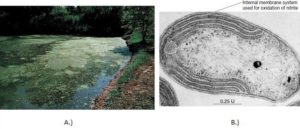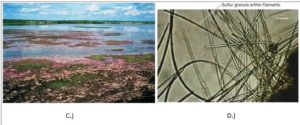Introduction to the Microbial Nutrition
- Microbial cells carry out several functions, which include metabolic processes and growth.
- For these processes, energy sources are required, which are obtained by nutrients.
- Nutrients are those substances that are energy sources to drive the metabolic or biosynthetic processes by the microbial cells.
- Microbial nutrition are classified into two types based on the requirements.

- The microbial cell is composed of some major elements such as Carbon, Oxygen, Hydrogen, Phosphorous, Sulfur, Potassium, iron, magnesium, and calcium. These are known as macronutrients or macroelements.
- They are needed by microbial cells in large amounts.
- For biosynthesis of macromolecules such as carbohydrates, proteins, nucleic acids, etc, macroelements (C, H, O, S, and N ) are required.
- Other macroelements such as K, Fe acts as a cation or participate in other several roles in microbial cells.
- Microelements such as Zinc, Cobalt, Magnesium, Copper, Nickel, and Molybdenum, are needed in small amounts.
- They are also called trace elements.
- Microelements are part of cofactors & enzymes and act as catalysts in the reactions carried within the cell.
- For e.g., Zn is available at the enzyme’s active sites.
Nutrition required by the microbes
- Microorganisms need macro elements (C, H &O) and electron sources.
- Carbon, Hydrogen & Oxygen molecules are components of organic molecules.
- Electron sources are used for other cellular works and also drive redox reactions.
- Nitrogen is involved in the biosynthesis of the amino acids, nitrogenous bases i.e., purines & pyrimidines, etc.
- Phosphorous is there in phospholipids, nucleic acids.
- Sulfur is necessary for the biosynthesis of amino acids like cysteine & methionine, and other cofactors such as thiamine & biotin.
Overview of Sources of Carbon, Energy & Electron

Broad classification of types of microorganisms based on nutritional requirements
- Usually, microorganisms require all three sources i.e., carbon, energy, and electron sources,
- As there are a diversity of microorganisms present in our environments, their nutritional requirements also vary.
Based on the nutritional type it is broadly classified into five classes :
| Nutritional Type | Carbon Source | Energy Source | Electron Source | E.g of Microorganisms |
| Photolithoautotrophy | CO2 | Light | Inorganic e– donors | cyanobacteria, Purple & green sulfur bacteria, |
| Photoorganoheterotrophy | Organic carbon or maybe CO2 | Light | Organic e– donor | Purple & Green non-sulfur bacteria |
| Chemolithoautotrophy | CO2 | Inorganic chemicals | Inorganic e– donors | Iron-oxidizing bacteria, methanogens, Sulfur-oxidizing bacteria, nitrifying bacteria |
| Chemolithoheterotrophy
(Mixotrophy) |
Organic carbon or maybe CO2 | Inorganic chemicals | Inorganic e– donors | Few sulphur-oxidizing bacteria e.g., Beggiatoa |
| Chemoorganoheterotrophy | Organic carbon | Organic chemicals | Organic e– donor | Non-photosynthetic microbes |


- Some organic compounds are important for microbial growth but cannot be synthesized by few microbes, they are known as growth factors.
- Generally, they are obtained from precursors present in the environments.
- The types of growth factors are Vitamins, amino acids, purines & pyrimidines.
- On the other hand, microbes that are capable of producing vitamins are exploited for commercial use. For e.g., Riboflavin is produced by Candida, Ashbya, Clostridium.
References and Sources
- https://imicrobiology.blogspot.com/2020/12/microbial-bacterial-nutrition.html
- https://www.slideshare.net/SuchittaU/nutritional-requirement-by-microorganisms
- https://merlinsmicroworld.blogspot.com/2021/08/microbial-nutrition.html
Also Read:
- Microbial Fuel Cells
- Tissue Transplantation Rejection
- E.coli-Epidemiology, Pathogenesis and Treatment
- Different types of Pathways for ATP Production
- Overview of Glucose Catabolism via Glycolysis
- Microorganisms in Freshwater Ecosystems
- Classification of viruses on the basis of genome
- Membrane Transport: Principle, Passive & Active Transport and Types
- Mycobacterium tuberculosis-Epidemiology, Pathogenesis, and Treatment
- CRISPR-Cas9 Gene editing tool: Introduction, Principles, Uses & Applications

Prefer me a good book about microbial nutrients